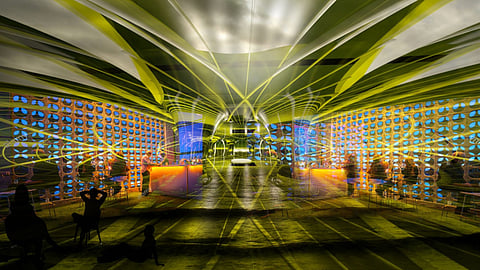Are Lighthouses the New Cathedrals of Culture and Ecology?
A Beacon Reborn: Observation Tower by RYSY Architekci
For centuries, lighthouses embodied both pragmatism and poetry—rugged towers of light that warned sailors away from rocky shores while quietly fueling the mythology of solitude, endurance, and romance. But GPS satellites have made their navigational role nearly obsolete. What remains is the architectural typology: slender towers standing sentinel at the periphery, where land meets sea. And architects, it seems, are unwilling to let them vanish into relicdom.
Instead, they are transforming the lighthouse into a cultural icon, a sculptural statement, even a laboratory for ecological innovation. No longer just beams of light in the fog, contemporary lighthouses are evolving into beacons of community, sustainability, and imagination. From Austria’s glowing sails to South Korea’s energy-generating turbine hotel, today’s lighthouses are less about guiding ships and more about guiding society toward new ways of living with nature.
The Sun Tower: Nature Meets Urban Life
In Yantai, China, OPEN Architecture’s Sun Tower is both a cultural landmark and an ecological gesture. Split down the middle, the building channels natural light straight through its body, revealing a library, theater, digital galleries, and a seaside café within. Like a lighthouse, it stands at the threshold between ocean and city—yet instead of warning sailors, it welcomes the public.
By slicing the tower in two, the architects literally fuse transparency and openness into the structure, symbolizing a marriage of tradition and modernity. It is a lighthouse not of danger, but of possibility—demonstrating how architecture can anchor both cultural and ecological respect.
The Evolving Lighthouse: From Navigation to Eco-Tourism
Arcari Cimini Architettura’s Evolving Lighthouse asks a blunt question: if satellites replaced the beam, why not reinvent the tower? Their conceptual design envisions a structure that harnesses wind turbines to generate energy, while simultaneously housing eco-lodges for visitors.
The brilliance lies in reclaiming the lighthouse’s unique context—height, isolation, and proximity to water—and reprogramming it as an eco-tourism hub. Part infrastructure, part resort, it transforms redundancy into relevance, echoing a larger truth: architecture must evolve to remain alive.
Lightsails: Sculptures of Navigation
On Austria’s Millstätter Lake, Lightsails by Söhne & Partner Architects reinterpret navigation through art. Seven luminous sails guide visitors across the state exhibition like sculptural compasses.
These sails don’t just glow—they respond. Colors shift with temperature, brightness intensifies as people approach, and the installation becomes a living dialogue between humans and the environment. If lighthouses once told sailors where not to go, Lightsails invite people forward, transforming caution into celebration.
The Observation Tower: A Playful Beacon
In Warsaw’s Bardowskiego Lagoon, RYSY Architekci built an Observation Tower that doubles as a climbing wall and recreational hub. By day, it is a community playground; by night, it glows across the water like a modern beacon.
This playful duality positions the tower as a social catalyst rather than a solitary sentinel. It doesn’t mourn the obsolescence of lighthouses; it revels in their evolution, proving that vertical markers along water still have power—this time to bring people together.
Cubes Aleorion: Ancient Memory, Modern Monument
In Greece, bo.M design studio revisits history with the Cubes Aleorion Lighthouse Project in Volos. Inspired by Xerxes’ ancient Aleorion from 480 BC—the earliest recorded maritime safety structure—the design stacks rotated concrete cubes into a hollow, climbable tower.
This reimagining merges archaeology with modernity. As visitors climb, framed openings offer shifting views of the bay, transforming the walk into a cultural promenade. It’s a lighthouse as public art, a timeless marker reanimated for a city that lives on the edge of myth and sea.
Lighthouse Turbine Hotel: Energy, Shelter, Spectacle
Perhaps the boldest reinvention comes from Margot Krasojevic’s Lighthouse Turbine Hotel off the coast of Jeju, South Korea. Built atop an oil rig platform, it fuses renewable energy and hospitality into one futuristic structure.
Encased in lightweight ETFE and powered by wind and wave energy, the turbine hotel isn’t just a place to stay—it’s a statement. Guests experience renewable systems firsthand, blurring the line between luxury resort and research lab. Like the lighthouses of old, it promises safety on turbulent seas, but now in the form of ecological resilience.
A Threshold for Tomorrow
What all six of these projects reveal is that the lighthouse endures not because ships need it, but because humanity does. At the edge of land and water, where visibility and vulnerability meet, the lighthouse has always been more than a tower—it is a metaphor. Now, redefined as a cultural hub, ecological platform, or experiential sculpture, it continues to shine, not just across oceans, but into the future.
Inspired by what you read?
Get more stories like this—plus exclusive guides and resident recommendations—delivered to your inbox. Subscribe to our exclusive newsletter
Resident may include affiliate links or sponsored content in our features. These partnerships support our publication and allow us to continue sharing stories and recommendations with our readers.

